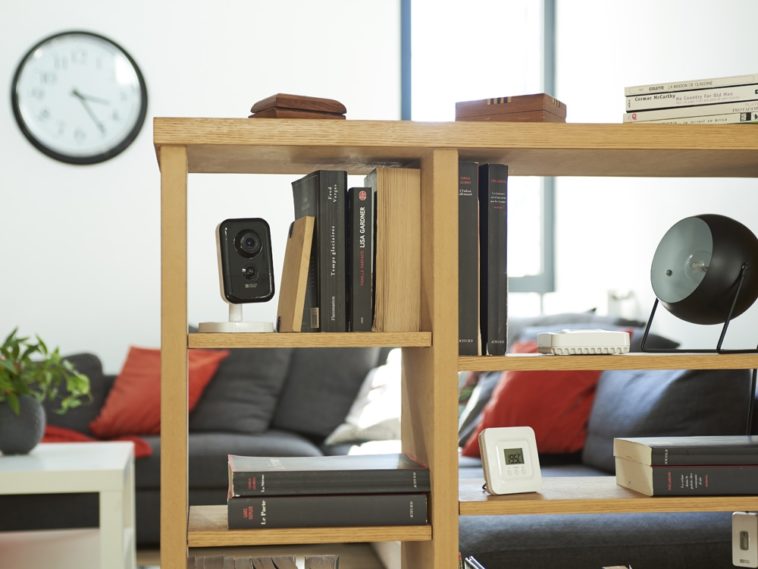To secure your home on a daily basis, or go on vacation with peace of mind, installing cameras at home is attracting a growing number of individuals. From a simple camera connected to a video remote surveillance system managed by a company, it’s not easy to navigate. Here are some tips for making the right choice.
According to the Ministry of the Interior, at least 234,300 burglaries were perpetrated in France in 2021. And this figure does not take into account the attempts! As the holidays approach, a house left unattended then becomes a prime target. A survey carried out in 2020 by Kiwatch, a specialist in video surveillance systems, suggested that July, August and December are the most risky periods, and that 24% of burglaries are carried out when the dwelling is temporarily unoccupied.
To protect yourself against this, securing your home is therefore essential and there are many solutions. Starting with the good old methods that have proven their worth. According to Verisure, expert in smart alarms: “in their absence, the French tend, as a priority, to opt for traditional methods: ask their relatives to pass regularly (45%), close the shutters (44%) and raise mail (38%) “.
To leave with peace of mind, or ensure the safety of your daily hibatatin, another solution is to equip your home with a video surveillance or remote monitoring system.
Connected cameras and self-monitoring
Netatmo, Bosch, Logitech, Yale … Manufacturers offer a very varied range of connected outdoor and indoor cameras, all of which are based more or less on the same principle: via a dedicated application, an individual can very easily access his camera and see what’s going on at home, directly on their smartphone or tablet.
The principle here is that of self-monitoring. So the onus is on you to keep an eye on your home. If you witness an attempted intrusion into your home, a burglary, or even a fire, for example, never intervene alone and call for help immediately.
Indoor Wi-Fi Camera – Full HD © Yale
In terms of functionality, tech-savvy people will get their money’s worth. These cameras can sometimes be embellished with motion or heat sensors for example. Some products are even equipped with a alarm which “when it is triggered can ring at more than 100 decibels (dB), and triggers a flash of light in order to surprise intruders and scare them away” explains Hélène Guo at Imou.
Other cameras can rotate 360 °, record up to 200 events and film in HD … “We have launched a camera offer, with an algorithm capable of differentiating an animal from a human, of detecting the image or heat, to exclude areas “, for his part, explains Jean-Sébastien Prunet, director of the Safety ranges of the Somfy group.
Regarding the price of this equipment, it is difficult to be exhaustive in the face of this avalanche of features. Jean-Sébastien Prunet indicates however that “today, for reliable products, and some options, prices will start around 150-200 euros for indoor cameras. Outside, we are more around 300 euros, because these are products that must withstand bad weather in particular “.
Warning ! Note that before installing connected cameras, you should find out about the quality of your bandwidth, to ensure that your internet connection can support the installation of one or more cameras.
Video surveillance and remote monitoring: the eye of the experts
Another option to secure your home: opt for video surveillance. Presence of camera? Affirmative. Except this time your system alerts a call center managed by a third party company in the event of an unusual event detected. In short: you delegate! More practical, more secure, but also more expensive, obviously.
It is important here to differentiate between remote monitoring, which alerts a call center as soon as alarms or sensors are triggered, and video surveillance, which is based on the same principle but embellished with cameras. The second option is obviously the safest.
“The major drawback of remote monitoring alone is the unreliability of the photo captures during an event such as an offense: raising doubts is difficult for operators because they are based on photos of average quality and difficult to use for insurance or the police “explains Kiwatch on its website.
Especially since, if a remote monitoring operator has contacted the police services “without raising any doubts carried out by an agent or by yourself (circular INTD1502555C of March 26, 2015)”, he incurs a fine of 450 €.
Remote monitoring coupled with video allows, on the contrary, torecord live. “You can (for example) interact with your home to stop the intruder and confirm to the call center that it is indeed an intruder.”
Arlo Essential Spotlight Indoor Camera © Verisure
In terms of functionality, again, there is plenty to choose from! Some are even worthy of spy movies. These include anti-jamming systems that hijack technologies aimed at disrupting communication between the system and the central monitoring station. “This technology will alert the monitoring center if it detects a jammer,” explains Sébastien Marcotte, Marketing Director at Verisure.
Often, CCTV is also linked to a siren. A first deterrent, which can be coupled with a visual alert indicating that the house is being watched. As a last resort, some systems are even equipped with an opacifying fog which aims to confuse the intruder. Spy film we tell you!
Of course, these systems are much more expensive than dedicated self-monitoring cameras. Sébastien Marcotte explains: “a basic offer includes the purchase of equipment, installation and follow-up service. Count around 800 euros. Add to that a monthly subscription of several tens of euros …” Of course, the final score will also depend a lot on the size of your home and therefore the sizing of the system.
Warning ! Before setting your sights on a monitoring service provider, you should make sure that the latter is certified. In France, the APSAD certification, issued by the certifying body CNPP Cert certifies the quality of a fire, intrusion, video or remote monitoring services system.



